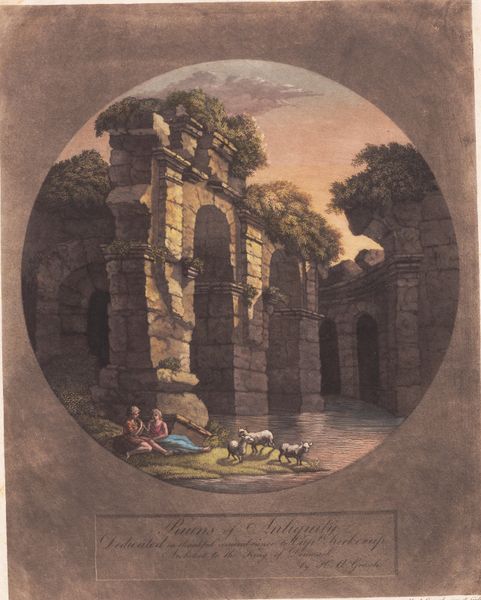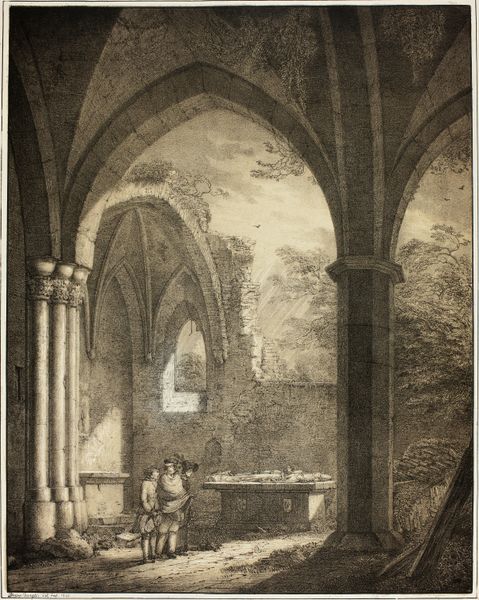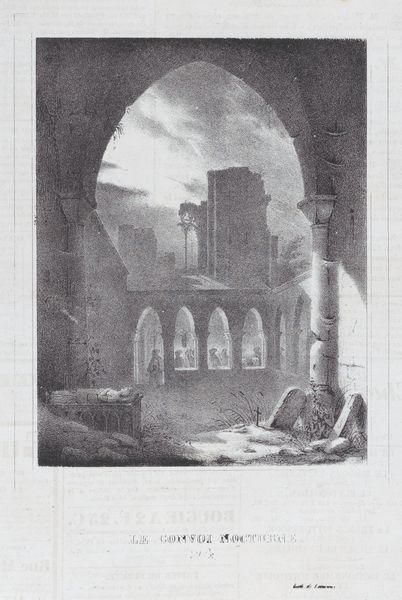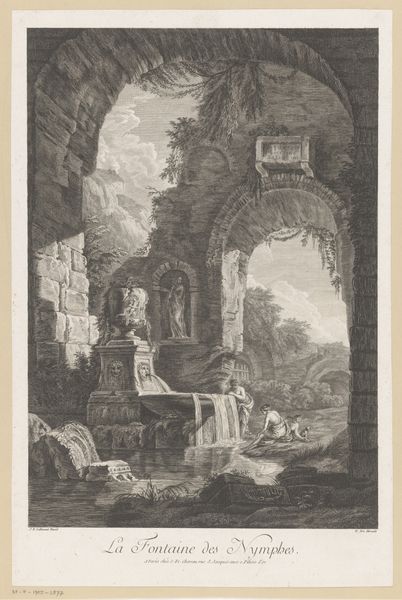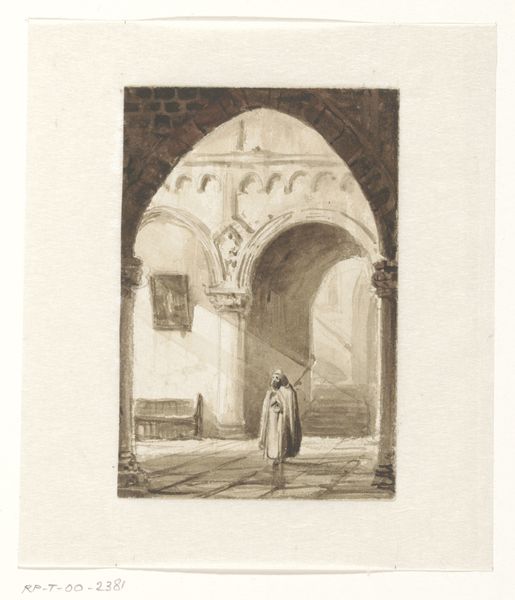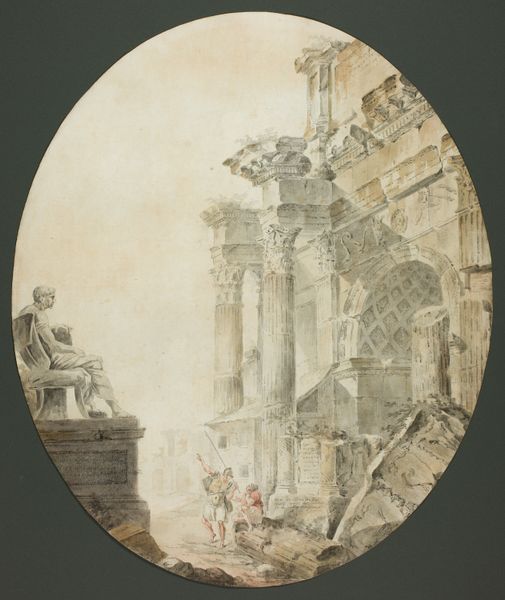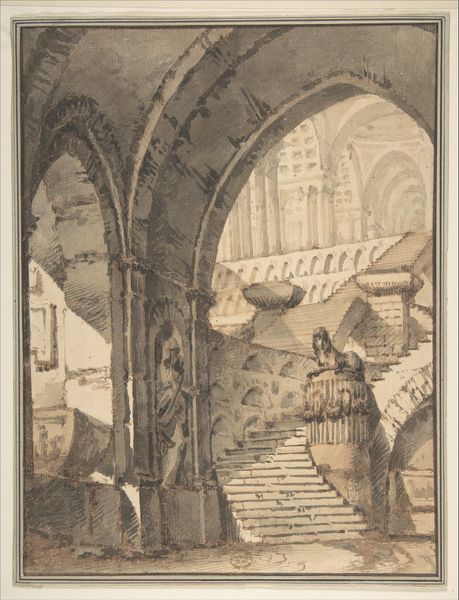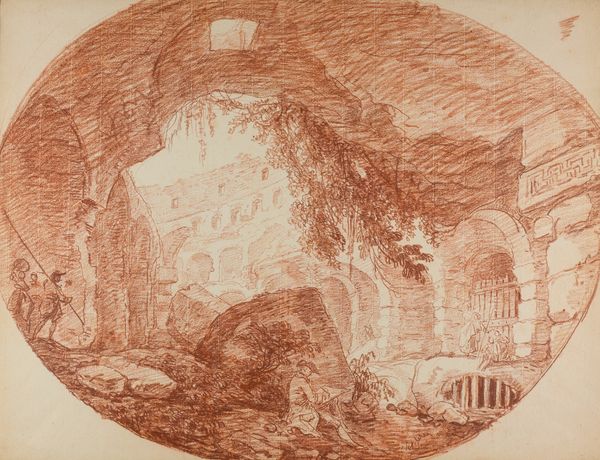
aquatint, print, etching, engraving
#
aquatint
#
neoclacissism
# print
#
etching
#
landscape
#
romanticism
#
cityscape
#
history-painting
#
engraving
#
watercolor
Dimensions: 395 mm (height) x 275 mm (width) (bladmaal), 342 mm (height) x 303 mm (width) (plademaal), 321 mm (height) x 255 mm (width) (billedmaal)
Curator: Heinrich Grosch created this evocative print, "Ruins of Antiquity. Dedicated to Clemens," sometime between 1763 and 1843. He employed a combination of etching, engraving, and aquatint. Editor: It feels like a wistful dream, doesn’t it? That golden light reflecting off the water, the ghostly arches in the distance. A little sad, though—a poignant farewell to greatness. Curator: It's fascinating how Grosch orchestrates the composition. We're presented with a circular vignette, almost like looking through a telescope or perhaps a camera obscura, focusing our gaze. Note how the dark archway frames a brighter, receding vista. Editor: Exactly! The stark geometry of the arch and the submerged, boxy ruin contrast with the fluid, melancholic sunset in the background, giving the impression that this bygone splendor and beauty, so powerful in their own right, will vanish when the final ray disappears. Is it the inevitable passage of time he captures, or something else? Curator: The title explicitly points towards that. It could be read as a commentary on Neoclassicism's fascination with the past and Romanticism’s contemplation on mortality, filtered through the lens of 19th-century Denmark's sociopolitical sentiment. The statues in their niches add to the narrative depth. Editor: Ah, yes, the stoic figures half-submerged, staring blankly into the golden distance—a touchstone, no doubt. Are they remembering how time and tide can consume all? Is there a sense of catharsis in it all? It's like Grosch invites us to consider both the rise and fall inherent in civilization. Curator: Perhaps Grosch sought to spark conversation or a dialogue about what is truly of value—those “ruins” we may wish to preserve… or let go of. Editor: I guess, in its delicate detail and melancholic beauty, this print is both a memory and a quiet invitation to contemplate our place in a bigger narrative. Thanks, Grosch, for that poignant pause.
Comments
No comments
Be the first to comment and join the conversation on the ultimate creative platform.
